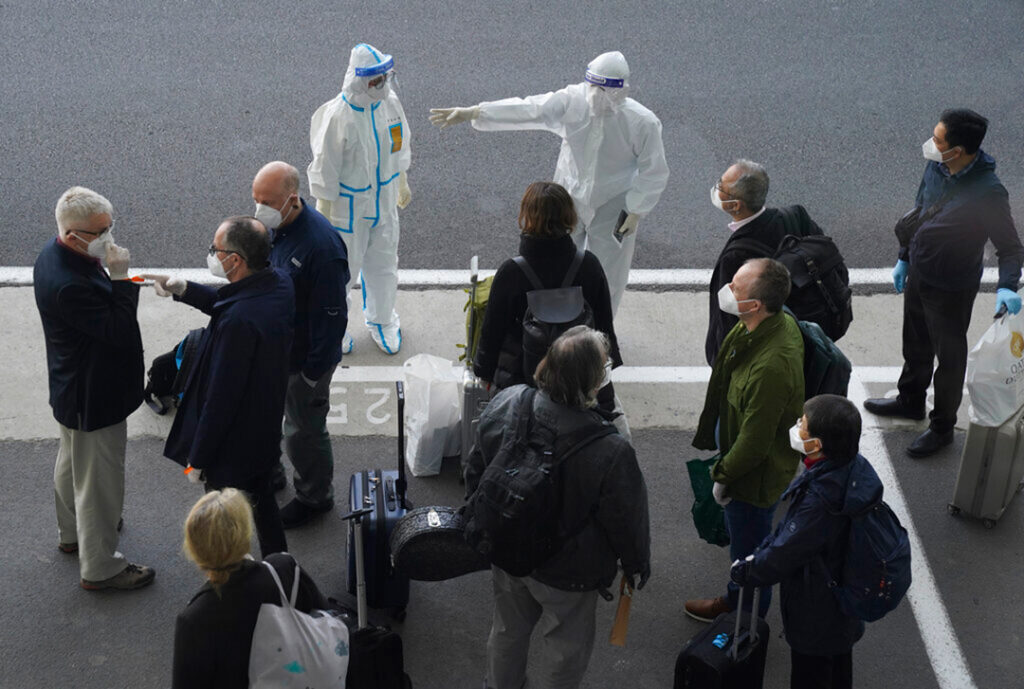ADF STAFF
The World Health Organization’s long-awaited search for the origin of COVID-19 got underway in mid-January, after a weeklong delay by Chinese officials and China’s decision to bar two scientists who tested positive for coronavirus antibodies.
The team of international experts includes: an epidemiologist who connected Middle East respiratory syndrome (MERS) to camels, a veterinarian whose work linked 2014’s West African Ebola outbreak to bats, and an expert on the ways disease-causing microbes spread in food markets.
The researchers are trying to determine the origin of COVID-19 and the path it took from its animal host to humans. The first jump to people is believed to have occurred at Wuhan’s wet market. Vendors there sold a variety of wild animals for human consumption, including bats and pangolins — two animals considered potential sources for the COVID-19 virus.
The virus first was reported at the end of December 2019. In the 13 months since, COVID-19 has become a worldwide pandemic, infecting more than 96 million people and killing more than 2 million. Those who survive can have life-altering side effects.
In Africa, a new variant of the virus has led to a rapidly spreading second wave of infections. Africa took five months to reach 1 million cases by last August. Cases have tripled to 3 million in the five months since then.
The WHO team began its work on January 15 despite repeated delays by Chinese officials, who initially covered up the outbreak in late 2019 and spent much of 2020 opposing international calls for an independent investigation into the cause.
“The [Chinese Communist Party’s] deadly obsession with secrecy and control comes at the expense of public health in China and around the world,” the U.S. State Department said in a statement released January 15.
Chinese leaders also resist the idea that Wuhan was the original source of the virus.
An investigation by The Associated Press found that Chinese officials have confiscated samples taken by researchers studying bats. The COVID-19 virus is nearly identical to coronaviruses found in horseshoe bats native to China.
According to the AP, the Chinese government “is strictly controlling all research into its origins, clamping down on some while actively promoting fringe theories that it could have come from outside China.”
Under direct orders from President Xi Jinping, all research findings must be approved by a governmental task force before they can be published, the AP reported.
Virologist Marion Koopmans of the Netherlands, who worked on MERS and tracked the recent spread of COVID-19 in European mink farms, told Nature research journal that the team will consider every possibility, including the idea that the COVID-19 virus escaped from the Wuhan Institute of Virology.
“Anything is on the table,” she said.
More than a year after the outbreak, evidence may be hard to locate. Chinese authorities closed the market and sterilized the section where wild animals were sold.
After leaving quarantine, the WHO team has two weeks in Wuhan to do its investigative work. They will leave the country before the Chinese New Year starts February 12.
Australian researcher Dominic Dwyer, who is part of the investigative team, told the Australian Broadcasting Corp. the team will not seek to locate “patient zero,” the first human source of the virus. Instead, the WHO can shine a light on areas where more research needs to happen.
“We may have a much better indication of whether the virus truly started in Wuhan,” he said. “Or did it start somewhere else but was then amplified in Wuhan?”

